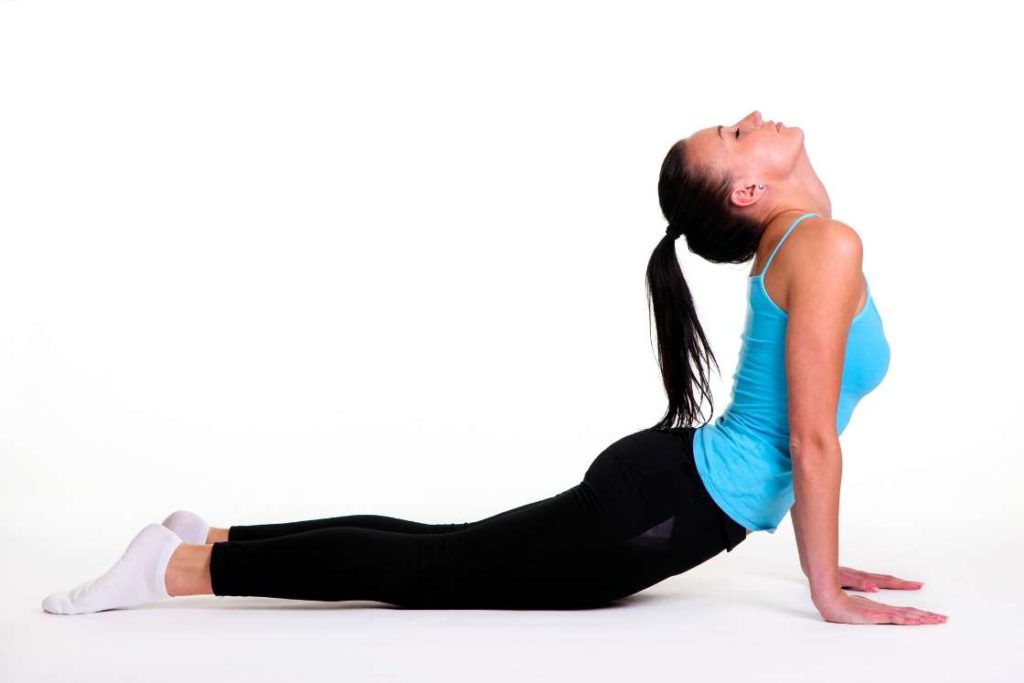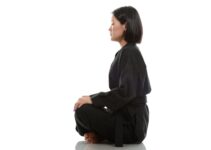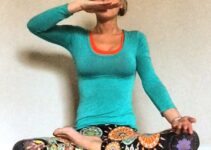Bhujangini Mudra is named after the serpent form the body takes while practicing this gesture. “bhujang” refers to “cobra” or “serpent” and “mudra” means “gesture”.
Practicing Bhujangini mudra involves leaning forward stretching the neck and lifting the chin. This is followed by gulping the air into the stomach. This practice mimics a cobra flaring its hood, hence the name. It is also known as “cobra gesture” or “cobra respiration”.
Bhujangini mudra is a type of mana (head) mudra forming a major part of Kundalini yoga kriyas. Generally, in Mana Mudras sense organs, viz eyes, nose, ears, nose, tongue, and lips are involved as a means of meditation practice, in contrast to simple hasta mudras where only hands are used.
Bhujangini Mudra Practice Guide
Bhujangini mudra is performed by sucking the air in via mouth into the stomach and then expelling through the same by belching.
Expelling the air in the form of belch or burp in Bhujangini mudra symbolizes the cleansing of the digestive tract. Also, the satiating effects that it leaves are incredible for the practitioner on physical, mental, as well as spiritual levels.
Thus, it serves as a cleansing technique to chuck the internal impurities using air as a medium. Besides being a mudra this practice also involves focused breathing patterns, hence also categorized as pranayama.
Ancient traditional texts like Gheranda Samhita states it as a destroyer of death and decay.
Bhujangini mudra shares a close resemblance with an ancient cleansing practice involved in Shatkarma, Vatsara Dhauti. However, in Vatsara Dhauti the air sucked in via mouth is expelled out through the anus, unlike Bhujangini.
Bhujangini Mudra Steps
- Sit in a comfortable meditative posture like sukhasana, padmasansa, etc.
- Close the eyes and relax the body especially the abdomen.
- Lean your upper body forward at your hips pushing the chin forward.
- Stretch your neck upward lifting the chin and gazing towards the ceiling.
- Inhale sucking the air through the mouth in a series of gulps.
- Fill the air into the stomach instead of the lungs as though you are drinking water.
- Expand the stomach as much as you can.
- Sit back to normal position and hold the air in as long as you’re comfortable.
- Then, expel it out by belching through the mouth.
Duration and Sequence of the Practice
- The above-mentioned practice forms one round of the Bhujangini mudra. It is recommended to practice three to five rounds at a stretch.
- As most of the mudras, the best time to practice it is also early morning hours.
- After completing the practice relax the body into the initial pose and breathe normally.
- For better results, always practice it on an empty stomach.
- One can practice it at any time but it is especially recommended after Shankha Prakshalana technique.
- Try to avoid the practice in polluted places or if there are any respiratory disorders.
Variation

There is also a modified version of Bhujangini mudra that differs in the position in which it is performed.
- Instead of sitting in a meditative pose, this variant is practiced assuming Bhujangasana.
- The further practice starting from gulping the air via mouth remains the same.
As per this variant, ‘bhuja’ means arm. In this variation, arms are used to lift the head up and then the mudra is performed so it’s named Bhujangini mudra.
Side Effects of Bhujangini Mudra
While Bhujangini Mudra offers numerous benefits, it is essential to be aware of its potential side effects:
- Stomach Discomfort: Gulping air into the stomach can cause discomfort, bloating, or a feeling of fullness.
- Dizziness: Holding the breath for extended periods may lead to dizziness or light-headedness.
- Abdominal Pressure: Expanding the stomach can increase pressure on the abdominal organs, which may be uncomfortable for some.
- Neck and Back Strain: Leaning forward and stretching the neck can cause strain, especially for those with pre-existing issues.
Bhujangini Mudra Benefits
1. Improves digestion
Bhujangini Mudra is known for enhancing the efficiency of the digestive organs. It stimulates the walls of the esophagus and the digestive glands, facilitating the secretion of digestive juices. Consequently, it is beneficial for improving digestion.
2. Tones the stomach
This mudra has satiating effects on hunger, thus regulating eating habits. It benefits the digestive tract internally and strengthens the abdominal muscles, providing a toned tummy and a fitter appearance.
3. Cures digestive disorders
Bhujangini mudra stimulates the wind (Vayu) element. It balances the Samana Vayu and Pachaka Pitta expels Apana Vayu. It also stimulates a balancing impact on the prana Vayu – Udana Vayu axis.
This results in removing the stagnant air from the system and alleviates digestive disorders like gastritis.
4. Improves respiration
Bhujangini mudra follows the phases of pranayama practice, i.e. inhalation (Puraka), retention (Antara), and exhalation (Rechaka).
Both inhalation and exhalation occur through the mouth and retention are practiced by holding the breath inside the stomach. It improves respiration in a way that enables the practitioner to float in the water for a longer duration.
4. Energetic benefits
This mudra has a lot to offer including the activation of two energy chakras. It stimulates the Solar plexus (Manipura) and throat (Vishuddha) chakras.
Note: Combining the practice of Bhujangini mudra with Tadagi mudra strengthens the vocal cords. It is generally practiced by singers to have a melodious voice.
Conclusion
Bhujangini mudra is a power-pack that holds so many benefits within a single practice. There is not a single drawback or limitation that you can use as an excuse to skip this practice.
Therefore, next time when you sit down to meditate or to do your daily yoga routine do not miss practicing a few rounds of Bhujangini mudra.




